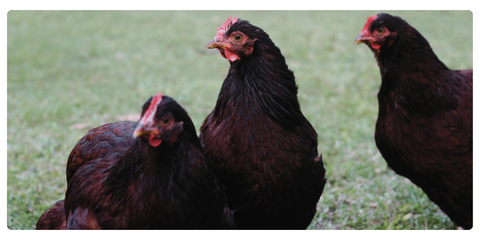Homesteading, a lifestyle of self-sufficiency, is becoming increasingly popular among those seeking to reduce their carbon footprint, grow their own food, and lead a more sustainable life. For small-scale homesteaders, especially those new to this way of life, choosing the right type of livestock can be a critical decision.
This blog post will guide you through the key factors to consider when selecting livestock for your small homestead.
1. Assess Your Space and Resources
Before you start dreaming about waking up to the sounds of clucking chickens or bleating goats, it's essential to realistically assess the space and resources you have available. Not all livestock require the same amount of space. For instance, chickens require far less space than cattle. Additionally, consider the type of forage available on your land, as well as your ability to supplement their diet with feed.

2. Understand Your Goals
What’s your primary purpose for keeping livestock? Are you looking to produce your own milk, eggs, or meat, or are you more interested in animals for pest control or companionship? Different animals serve different purposes:
-
Chickens are great for eggs and meat, and they can help control pests.
-
Ducks provide eggs and meat as well, and they're excellent foragers.
-
Goats can be raised for milk, meat, or even fiber, depending on the breed.
-
Sheep offer wool, and they're good for meat as well.
-
Rabbits are an excellent source of meat and require minimal space.
-
Bees for honey production also contribute to the pollination of your garden.
3. Consider Animal Care and Maintenance
Each type of livestock comes with its own set of care and maintenance requirements. Chickens, for example, need daily feeding and egg collection, along with regular coop cleaning. Goats and sheep require secure fencing to prevent escape and protect them from predators. Research the specific needs of each animal you’re considering to ensure you can meet them.

4. Legal Restrictions
Check your local zoning laws and regulations regarding livestock. Some areas have strict rules about the types and numbers of animals you can keep, especially in residential areas. This step is crucial to avoid any legal issues down the line.

5. Start Small
If you're new to homesteading, it's wise to start small. Begin with a manageable number of animals, and choose species that are known for being hardy and low-maintenance. Chickens or rabbits can be a good starting point for beginners.

6. Connect with Local Farmers
One of the best ways to learn about keeping livestock is to connect with other homesteaders or farmers in your area. They can provide valuable insights, advice, and maybe even mentorship. Plus, they can be a source of livestock when you're ready to start.

7. Be Prepared for Commitment
Lastly, remember that keeping livestock is a significant commitment of time, resources, and emotion. These animals will depend on you for their food, water, shelter, and medical care. Be sure you’re ready for the responsibility before bringing them home.
Conclusion
Choosing the right livestock is a crucial decision for any small-scale homesteader. By considering your space, goals, and the care required, you can make a choice that enhances your homesteading experience and brings you closer to living a self-sufficient life. Remember, homesteading is a journey, and learning comes with experience. Start small, learn as you go, and enjoy the rewarding experience of connecting with your food and land in a very tangible way.










